
Two of my fellow Sidakers from the class of 2012 have written wonderful blog posts that are succinct and tell you concisely what their Sidak experience was like. Please do give them a read: Santbir Singh on Sikhchic “Why I’ll Be There.” and Ruby Kaur on Sikhnet with the aptly titled, “Amazing Sidak.” It should come as no surprise that my post about my experience is long, but I’ve inserted photos to hide this fact.
Last July was a busy one for me. I attended a playwriting workshop in Cape Cod, and directly after that, it was off to Texas for two weeks of Sidak, an experience I still find difficult to put into words. It is officially:
“a distinctive leadership development program for young adults seeking to increase their commitment towards the Sikh faith. This two-week intensive immersion in Sikh culture, language, values and community though understanding bÄnÄ« (scripture), tvÄrÄ«kh (history), and rahit (discipline), is held annually in the Hill Country of San Antonio, Texas.â€
There is nothing I disagree with in their description, but to me it is much more than just those things. I first learned about Sidak from a blog post on TLH by Sharandeep Singh, and I was very enticed by the Gurmukhi course. So enticed, I applied, despite my initial reservations. Those reservations were primarily based on the fact that I didn’t fit into the perceived demographic I had pinged in my head as the sort of person who would attend Sidak. I’m not a Sikh active in my community (at least not in the conventional sense), the gurduara, or even someone who had grown up attending Sikh youth camps, except one year at Jakara when I was 30 (http://ow.ly/l2F6X). I’m in my mid-30s, occasionally go to the gurduara, and while I read, write, and speak Punjabi “relatively well,†I am not well versed in Sikh theological terminology. I had no idea what the difference between a tuk, a var, or a bani were, when they’d be used in class or during Divan.
Earlier this week I went to a screening of the film Koi Sunta Hai, one of four documentaries produced by the Kabir  Project, an expansive music and film project directed by Shabnam Virani.
Project, an expansive music and film project directed by Shabnam Virani.
In their own words:
The Kabir project brings together the experiences of a series of ongoing journeys in quest of this 15th century North Indian mystic poet in our contemporary worlds. Started in 2003, these journeys inquire into the spiritual and socio-political resonances of Kabir’s poetry through songs, images and conversations.
We journey through a stunning diversity of social, religious and musical traditions which Kabir inhabits, exploring how his poetry intersects with ideas of cultural identity, secularism, nationalism, religion, death, impermanence, folk and oral knowledge systems.
I first learned about The Kabir Project a couple of years ago when they did a screening several clips from the films in Jackson Heights, Queens and featured a stirring performance by folk musician Prahlad Tipaniya, who is featured in the films. I was deeply moved and inspired by the films’ (and musicians’) explorations of Bhagat Kabir’s bani, and especially by the way the filmmaker and artists highlight the Kabir’s powerful message in the face of of contemporary manifestations of sectarian violence, caste oppression, and religious and national tensions in South Asia.
I was inspired again this week in watching Koi Sunta Hai, which highlights the Kabir-oriented journey of classical musician Kumar Gandharva. Kumarji, as he is referred to with admiration in the film, was a child prodigy classical Hindustani singer who developed an illness (the film says TB, Wikipedia says lung cancer) as a young man that forced him to not sing a note for five years. In that time of his world being turned upside down and his profession and main form of expression indefinitely at a halt, he began to hear singers from very non-classically trained backgrounds — folk singers, “common” people — singing the poetry of Kabir. This began to change his entire approach to music, spirituality, and life. The below clip from the film explains more about Kabir’s poetry and Kumarji’s relationship to it.
This post by our Mehmaan is none other than Harinder Singh. About Harinder Singh – he works with the Sikh Research Institute and the Panjab Digital Library to address all things Sikhi and Panjabi. http://twitter.com/1force
I have taken some time off to be Mr. Mom while my wife is on a work assignment in India. In preparing to make the move to Bangalore, I was excited about being in the land of MS Subbulakhsmi (renowned Carnatic vocalist) and Kalmane (locally grown 100% Arabica beans) coffee. Being here for about three weeks, this is what I have discovered: people are nicer than the North, infrastructure is horrible, and there is not much to see in the city. Even Frommers.com couldn’t come up a list of not-to-be-missed attractions in Bangalore, though people in India claim it to be a great city. I guess the new IT opulence has brought in pubs and gigs only (it is common for Indians to end almost every sentence with ‘only’).
Yesterday, I picked up my son Jodha Singh from the pre-school he is enrolled in here. His teacher said, he wouldn’t play Holi (“Festival of Colors”—though bastardized; some “celebrants” today throw sewerage on people as well!). Now, the legend of Holika is vanishing and so too the spirit of post harvesting thanksgiving prayer to the Almighty. Apparently, Jodha was upset when other children were throwing water and colors on him. I told Miss Priya that his aversion may have come because he has not partaken in this festival as the Sikhs of Panjab have a little reason to celebrate. She wasn’t sure how to respond; do most Panjabis and Sikhs know how to “play Holi?”
Guest Blogged by Jind Kaur
The Sikh Research Institute (SikhRI) is hosting a workshop specifically for children called, “Session for Children: Getting to Know Vahiguru” on June 27, 2010 in Windsor, Ontario. The seminar is aimed at piquing children’s curiosity and interest in not just Gurbani, but God. Information on the event can be found here.
The workshop is intended to be interactive with lots of questions that help children pick up new vocabulary, develop thinking skills and leave them with a want to learn more through discussion and self-discovery.
I don’t live in Ontario, and I don’t have children. If I did, I would definitely sign them up for this workshop. When I was growing up, Sunday School classes or home-Sikh-schooling by my grandmother involved exposure to Sikhi focused on memorization of Gurbani, the baseball cards of important Sikh figures (i.e birthday, important stats, a few saakhees, etc.), and two or three shabads our parents could command the singing of at will. There was little to no discussion involving the understanding of Gurbani or the Sikh world view, let alone any metaphysics-related dialogue. I really appreciate and applaud SikhRI for designing a program not for children of Sikh parents, but rather for Sikh children. This SikhRI program is tuning into children’s natural curiosity and helping them discover their spirituality early in life. How wonderful. Reading about this workshop made me reflect on my own upbringing as well as the hopes I have for my future (GodWilling) children.
Guest blogged by Harkiran
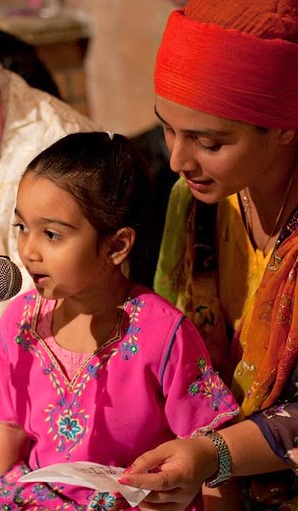
Becomes the first house of the man and yet it’s ironical, that its the woman that seeks a shelter all her life. As she grows up she leaves her house and her family to start a new life with her husband and then her own womb becomes the place where life comes to existence and get’s nurtured. Years of duality and other kind of “loves” doesn’t let man do justice even to the woman he calls mother.
There’s the Bani of Nanak that does justice to the status of a woman in society and then this Vaar by Bhai Gurdas Ji.
The Woman – Bhai Gurdas Ji
Vaar 5 Pauri 16
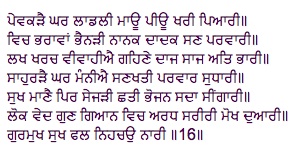
At birth a Sikh girl is ‘darling’ to her mother and father/ Later, she becomes admired by her brothers and sisters and favoured by her relatives / On attaining to ” the bloom of youth” she is wedded with costly gifts and presents / Now, respected by her husbands family and deemed lucky in her new household, she regarded as the equal of her spouse in both virtue and wisdom / She becomes as a doorway to salvation.
This beautiful verbal portrait written by Bhai Gurdas Ji not only makes you appreciate the beauty of a woman and but also puts ones mind in their creator too.
 After following some of the recent on-line debates, and discussing the topic at our local Gurbani Veechar meeting, I’ve been reflecting a bit on the concept of amrit vela in Sikhi.
After following some of the recent on-line debates, and discussing the topic at our local Gurbani Veechar meeting, I’ve been reflecting a bit on the concept of amrit vela in Sikhi.
To summarize the debate, many feel that amrit vela is a specific time of day (roughly three hours before dawn) where one is most attuned to Waheguru. It is the time of day where there are few distractions and one’s mind can fully focus on reflection and remembrance of Waheguru. Then there are others who feel that spirituality and reflection cannot be tied to a time of day…any time is perfect for simran, and amrit vela is more of a “state of mind” rather than a specific time. Both sides interpret various lines from Gurbani to defend their case.
I am by no means an expert on the topic. My only extended period of time waking up at amrit vela was many years ago and only for a few weeks. I’ll admit, I really enjoyed waking up before the rest of the world and designating a block of time to sit and do my paath properly, with full concentration and no other distractions – unlike now, where I often multi-task as a I rattle through my paath. However, with my poor time management as a university student, waking up at amrit vela became tougher and tougher. And after a few scary moments at the wheel driving home late at night…I decided to defer this personal goal of mine until it better suited my schedule…unfortunately, that day has yet to come.
By neglecting art, we’ve been neglecting our spirituality. And perhaps vice versa. Perhaps we could practice receiving a little more, instead of doing, as we normally do.
Most of us, especially in Asian communities that so highly value scientific endeavor, and want the next generation to all be doctors, grossly undervalue art. Sadly, this might be stunting our spirituality.
How often have your teachers, parents, and other adults in your life impressed upon you the importance of active effort, purposeful thought, and discipline? The scientific methods we rely upon to explain our environments and the universe all rely on these traits and oh-so-important- rationality. Through decades of education, we’re pounded into submission, learning to accept that rationality is good, and irrationality, bad.
But that’s not entirely true. And in the last week, I noticed that both Japji Sahib and a popular American site (especially amongst techies) bypassed rationality to focus on the importance of a different kind of knowledge – intuition. And it rang true. Intuitively. Irrationally.
From the 13th Pauri of Japji Sahib:
It might partly be the scarcity of female voices and public female faces in the Sikh community that makes Nikky-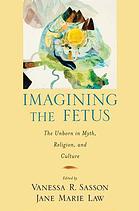 Guninder Kaur Singh’s so distinctive and refreshing. But in addition to her position as one of the few public female voices in the Sikh community, her original and creative work is really what makes Ms. Kaur-Singh so refreshing. As we have discussed in the past, in the context of “Relocating Gender in Sikh History,” the vast majority of Sikh history has been written by men. And thus, despite their best intentions, for the most part, women’s voice in Sikh history has been non-existent. It is silent.
Guninder Kaur Singh’s so distinctive and refreshing. But in addition to her position as one of the few public female voices in the Sikh community, her original and creative work is really what makes Ms. Kaur-Singh so refreshing. As we have discussed in the past, in the context of “Relocating Gender in Sikh History,” the vast majority of Sikh history has been written by men. And thus, despite their best intentions, for the most part, women’s voice in Sikh history has been non-existent. It is silent.
In this realm of mostly male voices, Ms. Kaur-Singh has taken an original position on a much-needed project: to explore a feminist perspective in interpreting Gurbani. Many translations of Gurbani have been written, some of which are quite good, and others that are quite lacking (in terms of staying close to the feeling of the original shabad and being easily understandable for today’s audiences). One of the most popular translations today, if not the most popular, is Sikhi to the Max. It’s heavily used in gurdwaras, at weddings, and by individuals at home. And in this translation, the divine is interpreted as He/Him/Lord. Not only is this archaic, it creates a framework of masculinity that limits our understanding of Waheguru. The Sikh conception of gender embraces as well as goes beyond gender.
In a piece we discovered recently, Ms. Kaur-Singh contrasts current practices of sex-selective abortion with the place of the feminine within Gurbani. In a chapter of “Imagining the Fetus: The Unborn in Myth, Religion, and Culture,” Ms. Kaur Singh orients readers with the history of sex-selection in Punjab. She then goes on to show how Gurbani holds the power to turn today’s practices on their head. In a few short pages, we are treated to a celebration of the feminine, reminded that our spirituality can focus on our source (the physical allegory of which is the mother) rather than its current infatuation with the end, and given a gender-neutral interpretation of excerpts of Gurbani which resonate as closer to a truer meaning than some other more widely used interpretations today.
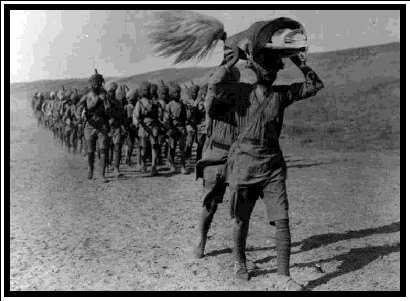 In honor of yesterday’s Gurpurab (Bhadon 17, Nanakshahi) marking the anniversary of the first installation of Guru Granth Sahib Ji Maharaj in the Darbar Sahib, I’d like to share a piece I had written for sikhchic.com at the culmination of last year’s “300 Saal” celebrations, titled “My Guru & I: In His Presence.”
In honor of yesterday’s Gurpurab (Bhadon 17, Nanakshahi) marking the anniversary of the first installation of Guru Granth Sahib Ji Maharaj in the Darbar Sahib, I’d like to share a piece I had written for sikhchic.com at the culmination of last year’s “300 Saal” celebrations, titled “My Guru & I: In His Presence.”
As 2008 comes to an end, I’ve been reflecting on all the “300 Saal” celebrations of the year. It was an inspiring year – and the discussion, speeches and sheer emotion of this milestone really gave me a chance to reflect on the role of the Guru in my life.
While volunteering at Gurmat camps, I always made a point to pose a question to the children, prior to leading them in to their first divan: “If you walked into this Gurdwara and instead of the Guru Granth Sahib being there, say it was Guru Nanak, or Guru Amar Das or Gur Tegh Bahadur, sitting there – how would you act?” How would you carry yourself when walking in? Would your mind-set be any different? Would your muthha tek take on a different meaning? Would you be more attentive and alert during the divan? Would you be more eager to listen to his words and try harder to understand him?
Guru Ram Das says:
Baani Guru Guru Hai Baani Vich Baani Amrit Saarey
Bani is the Guru and Guru is the Bani. And it’s within this Bani, that Amrit is found.
Thus, the Shabad (“The Word”) is, was and always will be the Guru. History tells us that even during Guru Arjan’s time, the Granth (then referred to as the Pothi Sahib because it was yet to be completed and anointed Guru), was the center of the congregation, the center of the Darbar, even in the presence of Guru Arjan himself.
The saakhis tell us that Guru Arjan had so much reverence for the Pothi Sahib that he kept it on an pedestal elevated even from himself, and joined the Sikhs in paying obeisance to it. This tells me that it is not the person, the attire or the physical attributes that make the Guru; instead, it is the Shabad. But we call the ten physical forms (from Nanak to Gobind Singh) Guru because they were the living manifestation of that Shabad.
They lived the Shabad. We sing it, they lived it.
 For those of you who enjoyed Vismaad Productions’ work with Sahibzadey, Rise of the Khalsa and Sundri, there is now a new animated movie to look forward to this fall. Bhai Taru Singh: True Saint. Fearless Soldier, is the latest production and will be premiering around the world over the next few months. The film’s website provides a description of the film,
For those of you who enjoyed Vismaad Productions’ work with Sahibzadey, Rise of the Khalsa and Sundri, there is now a new animated movie to look forward to this fall. Bhai Taru Singh: True Saint. Fearless Soldier, is the latest production and will be premiering around the world over the next few months. The film’s website provides a description of the film,
The story of Bhai Taru Singh is one of a true saint soldier who lived during an extremely difficult period for the Sikhs. The mughal rulers of the time were brutal towards all citizens, and especially the Sikhs. Bhai Taru Singh Ji bravely stood up to the regime which earned him the respect of all Hindus and Muslims from the surrounding villages. [link]
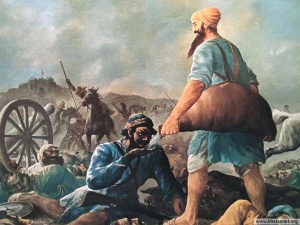 I’ve always enjoyed a good story…and amongst all the depressing news lately of our declining economy, raucous town hall meetings, and corrupt politicians…I often turn to StoryCorp’s podcasts for a quick “pick-me-up”. A few months back, I came across a beautiful piece titled “Finding El Dorado.” It’s the story of Gus Hernandez and the unique friendship he developed with Siddiqi Hansoti as a result of the current economic crisis. I was moved by this simple story of compassion and the power of the human spirit. Take a listen…it’s only 3 minutes [link].
I’ve always enjoyed a good story…and amongst all the depressing news lately of our declining economy, raucous town hall meetings, and corrupt politicians…I often turn to StoryCorp’s podcasts for a quick “pick-me-up”. A few months back, I came across a beautiful piece titled “Finding El Dorado.” It’s the story of Gus Hernandez and the unique friendship he developed with Siddiqi Hansoti as a result of the current economic crisis. I was moved by this simple story of compassion and the power of the human spirit. Take a listen…it’s only 3 minutes [link].
This story got me thinking about compassion and what it means to a Sikh. After some brief research, I found dozens of references to Daya (and its variations – Dayal, Dayala etc.) in the Sri Guru Granth Sahib Ji. Depending on the context, it is loosely translated as compassion, mercy or pity. Several times it is used as an attribute of Waheguru:
miharavaan kirapaal dhaeiaalaa sagalae thripath aghaaeae jeeo |3|
He is Merciful, Kind and Compassionate. All are satisfied and fulfilled through Him. ||3||
Other times it is used in the context of an Ardaas:
jath sath chaaval dhaeiaa kanak kar praapath paathee dhaan |
Please bless me with the rice of truth and self-restraint, the wheat of compassion, and the leaf of meditation.
But what I connected with the most was how compassion was described as a necessary attribute of the GurSikh:
dhaeiaa kapaah santhokh sooth jath gantee sath vatt |
Make compassion the cotton, contentment the thread, modesty the knot and truth the twist.
eaehu janaeoo jeea kaa hee th paaddae ghath |
This is the sacred thread of the soul; if you have it, then go ahead and put it on me.
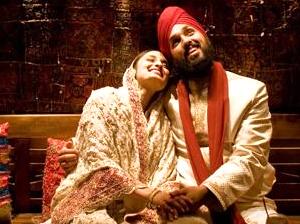 Since I exist in the age bracket where many of my friends are married or getting married, I am aptly aware of the concerns couples have about adjusting to one another after marriage. For example, how will living habits change? How will your husband/wife fit into your family? It’s a pretty daunting concept – especially for individuals who wait to get married later on in life, after years of education and commitment to careers, and along with this, years of being single. I’ve known many couples over the years who have had a difficult time adjusting to being part of a union. How can we blame them? Our community offers very little as far as pre-marital counseling for Sikh couples. In fact, a quick google search for “Sikh Marriage Counseling” doesn’t bring up anything pertinent.
Since I exist in the age bracket where many of my friends are married or getting married, I am aptly aware of the concerns couples have about adjusting to one another after marriage. For example, how will living habits change? How will your husband/wife fit into your family? It’s a pretty daunting concept – especially for individuals who wait to get married later on in life, after years of education and commitment to careers, and along with this, years of being single. I’ve known many couples over the years who have had a difficult time adjusting to being part of a union. How can we blame them? Our community offers very little as far as pre-marital counseling for Sikh couples. In fact, a quick google search for “Sikh Marriage Counseling” doesn’t bring up anything pertinent.
For many, it is also very important to know that your partner is on a similar spiritual path. This may be one of the most important elements to think about prior to marriage – as it impacts your day to day living and the way you may raise your children in the future. Some religions actually require couples to go through marriage counseling prior to marriage. We don’t seem to have this in our community but it’s not a bad idea. How many couples do you know who have gone to the Giani at their local gurdwara to elicit marriage advice? If any, i’m sure the number is small. Nevertheless, i feel this is integral to the success of marriage as there are certain questions which should be discussed before marriage.
What I did come across, however, are the following two tools. First, the Sikh Research Institute organizes the Grihast Retreat which,
is a 2-day event for young couples to strengthen marriage and family relationships by offering deeper communication between wife and husband. Grihast incorporates diverse themes that are at the foundation of a married life. New perspectives provide insights on building meaningful relationships while workshops and discussions offer a glimpse of the Gur?’s vision and ideals on marriage.
We’ve all sat through it before…or…stood through it, that is.
As Anand Sahib ends, we stand for Ardaas and collectively reflect on the lives and accomplishments of the Gurus and the 18th century martyrs who gave their lives to preserve our Sikh way of life. Somewhere in between this reflection, and wishing for “Sarbat da Bhala“, we take a bizarre detour in to the “ins and outs” of our community.” Yes…I am referring to the lengthy list of births, birthdays, graduations, anniversaries and other milestones we find in the middle of our Ardaas.
I’m not sure when this practice started; where a member of the sangat would make an offering to the Gurdwara so an “Ardaas” can be done on their behalf. Birthdays are most common week to week, but I have heard more creative ones – celebrating a new job, new car, first mother’s day, wishing someone well on an upcoming exam, or safe travels for someone’s trip to India. Some even taken advantage of this process, by doing an “Ardaas” on behalf of their business week after week – essentially advertising their local store, while they have the entire community’s ear. I’ve raised this issue to the committee that perhaps there needs to be a better way to handle these “community announcements” rather than during Ardaas…I mean, seconds after we recount the martyrs who were cut limb by limb and scalped, we collectively thank Waheguru for Tinku’s new Benz? It just doesn’t seem right.
The Sikh Gurus never believed in the exclusivity of their teachings. The Gurus undertook travels to spread their message to peoples of different cultures in their own native languages. The Gurus did not believe in the ideas of any language being ‘sacred’ or ‘special’. [link]
I found the above quote to be quite interesting given a recent conversation I’d had with a close friend of mine. She felt that the Guru Granth Sahib was not accessible to most Sikhs and this inaccessibility was actually detrimental to those Sikhs who wanted to understand the teachings of the Gurus. She recently found herself, on several occasions, wanting to refer to the Guru Granth Sahib in order to obtain some enlightenment on things occurring in her life. There were several obstacles she felt that prevented her from doing so. First, she doesn’t read Gurmukhi (although she is learning) and second, having a sound understanding of Gurmukhi doesn’t necessarily translate to comprehension. While I agree that it is important for each of us to learn Gurmukhi, to help deepen our understanding of Gurbani, I wonder how many Sikhs of our generation are able to truly do so.
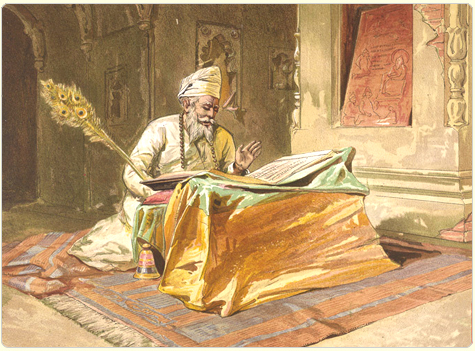 The Christian faith, for example, focuses heavily on bible study and encourages youth to participate in these groups at a young age. In our Gurdwaras, we place a large emphasis on learning Punjabi – an important element in having the tools to access our scriptures. However, we hardly pay any attention to teaching youth how to read and understand Gurbani. The Guru Granth Sahib is the only religious scripture in the world which contains ideas and thoughts of great saints from non-Sikh backgrounds. Without a doubt, it is unique in all sense of the word. If the Guru Granth Sahib is the most important source of wisdom for Sikhs – then why can’t the majority of Sikhs understand it?
The Christian faith, for example, focuses heavily on bible study and encourages youth to participate in these groups at a young age. In our Gurdwaras, we place a large emphasis on learning Punjabi – an important element in having the tools to access our scriptures. However, we hardly pay any attention to teaching youth how to read and understand Gurbani. The Guru Granth Sahib is the only religious scripture in the world which contains ideas and thoughts of great saints from non-Sikh backgrounds. Without a doubt, it is unique in all sense of the word. If the Guru Granth Sahib is the most important source of wisdom for Sikhs – then why can’t the majority of Sikhs understand it?
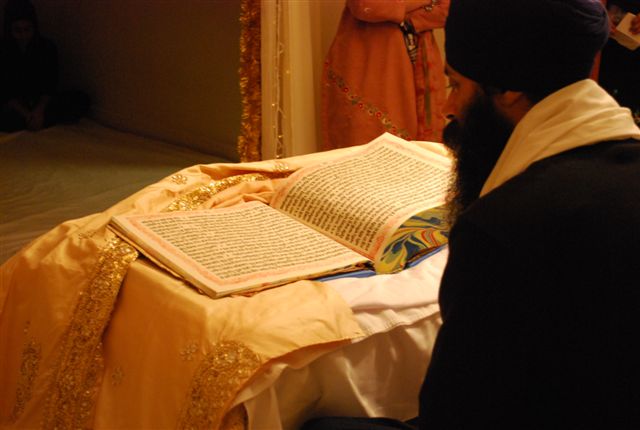 A few weeks back, an article called Outsourcing Prayers [scroll to the bottom], by Khushwant Singh caught my attention. It discussed how people pay big money to religious institutions abroad to carry out services and prayers on their behalf. This “outsourcing” of prayer helps out the “well-to-do” Americans and Europeans who do not have time for worship, while also benefiting cash-starved churches and the local economy of these remote areas. Several religions were mentioned in this article and Sikhs were not spared:
A few weeks back, an article called Outsourcing Prayers [scroll to the bottom], by Khushwant Singh caught my attention. It discussed how people pay big money to religious institutions abroad to carry out services and prayers on their behalf. This “outsourcing” of prayer helps out the “well-to-do” Americans and Europeans who do not have time for worship, while also benefiting cash-starved churches and the local economy of these remote areas. Several religions were mentioned in this article and Sikhs were not spared:
I sought explanation from the head granthi. He told me people from India and abroad sent money for akhand paths to be followed by Guru-ka-langar as thanksgiving or wish fulfillment. I could not comprehend how prayers recited by someone else could benefit a devotee who paid for them.?
There has been much debate in our community on whether paying a professional to do an Akhand Paath on one’s behalf is contradictory to Gurmat. I also remember years ago when the SGPC was “selling” Akhand Paaths on-line. Luckily, outrage from Sikhs all over the world stopped that practice. However, this article got me thinking about Akhand Paaths, and the role it currently plays in our community.
Thematically Sikh paintings are rare. Thus, when I came across the paintings below, I thought I should share. The oil paintings below are the work of Jaswant Singh Zafar. He’s a poet, photographer, and painter in his free time and an engineer in Ludhiana by day. This year, he’s spending his free time creating a series of paintings under the theme of ‘Gurbani.’ The paintings completed thus far weave the mool mantar through various aspects of nature, shapes, and other backgrounds.
At the end of the year, the series will be in an exhibition at the Artmosphere Gallery in Ludhiana. Artmosphere was created to provide a platform for budding artists in Ludhiana and Punjab such as Jaswant Singh Zafar. Such an endeavor cheers me and gives hope that the visual arts scene there is growing.

I appreciate these paintings because they provide some insight into the art scene in Punjab- an example of what’s happening there. More works from this series can be found here.
Good Morning.
I will be taking care of all your problems today. So sit back, relax, and enjoy the rest of your day!
-God
This is what the sign on the wall read at the Salvation Army on the North side of Chicago. Prior to volunteering there, I only knew stereotypes of the homeless and hungry…just what you see on TV. But it didn’t take long for those stereotypes to break down. The people we served meals to were happy, smiling, polite and full of energy. What surprised me most, was their deep sense of spirituality. Not only did I find this in my conversation with folks, but even in their greeting. My standard, “Good morning, how are you?” was often replied with “Blessed” or “In His Grace”, many with bible in hand.
I used to wonder, how could people so hard on their luck, have so much faith? I have seen so many times with family and friends, after they’ve suffered difficult circumstances or loss, God and religion are the first things questioned, i.e. “How could God do this to me?”
Last week, I posted on the Gurmat Gian Group’s performance of classical keertan. This all Sikh women’s group, expect  for a tabla player, is based in Ludhiana, Punjab. This week, I wanted to share a brief interview with one of its members, Keerat Kaur.
for a tabla player, is based in Ludhiana, Punjab. This week, I wanted to share a brief interview with one of its members, Keerat Kaur.
1. How did you come to join the Gurmat Gian Group? How long have you been with the group? How often does the group meet?
The Gurmat Gian Group was formed by my mother Gurpreet Kaur. My mother Gurpreet Kaur and myself used to do kirtan in the weekend gatherings of Gurmat Gian Missionary Trust. These programmes are held every Saturday and Sunday. Impressed with our singing, we were asked by the organizers and especially by Rana Inderjit Singh to train young boys and girls to do kirtan. Now Gurpreet Kaur takes regular classes at the Gurmat Gian Missionary College where many girls and boys of different age groups are learning kirtan.
Encouraged to go in to recording Gurabni Kirtan lead to the formation of Gurmat Gian Group which now has 5 CDs to its credit.
I’m a bit of an NPR Junkie, and one of my favorite series I listen to is called This I Believe. This I Believe is a national media project that engages everyday people in writing, sharing, and discussing the core values and beliefs that guide their everyday lives. I’ve been following the series for quite some time now, but last week, I came across a story that really moved me – it’s called Finding Freedom In Forgiveness.
In 1984, Jennifer Thompson -Cannino testified that Ronald Cotton was the man who raped her. Eleven years later, DNA evidence cleared him of the crime.
This story speaks to the healing power of forgiveness.
Although I haven’t heard many Kirtanis or Granthis speak about this topic much, Guru Sahib in fact has much to say about “Khima” (Forgiveness). As I’m starting to research and reflect on this concept through Gurbani, I came across this line that I immediately connected with. From Bhagat Kabeer Ji, page 1372:
jehaa lobh theh kaal hai jehaa khimaa theh aap |155|
Where there is greed, there is death. Where there is forgiveness, there is God Himself.
Finding Freedom in Forgiveness is less than four minutes long and worth the listen. I would love to hear what others think of this audio essay and perhaps an experience of your own as you’ve discovered forgiveness on your own journey…
No longer are Punjabi “staarz” (i.e. Gurdas Maan, Arminder Gill, etc.) or Sukhbir Singh Badal’s Mrs., Harsimrat Kaur Badal (i.e. Nanhi Chhaan project), the only ones focusing on the “girl child”, but also a granthi at a California Gurdwara. I was recently surprised to hear a granthi support the idea of gender equity as part during his Punjabi kathaa of a shabad he was singing. No he wasn’t a renaissance granthi, but a common one you would encounter in your general Gurdwara. The sangat wasn’t full of progressive youth/parents, but consisted of lay-persons. AND the focus of his kathaa wasn’t gender equity, but our needs/yearnings. So you may ask how was he promoting gender equity? Well, he used the yearning for a thee (daughter) or puthar (son) in the SAME example to help the sangat understand the shabad’s message. In my experience, the yearning for a daughter and son are never used together to help the sangat think beyond their wants and just accepting Waheguru’s will. Common examples are a yearning for a betaa or a mother caring for a betaa (we could also add a big house and nice car to the list). I have never heard of a yearning for a betee or caring for a betee. It has been during these kathas that the contradiction between theology and contemporary practice of Sikhi have been poignantly highlighted for me. Yes, theologically we believe in gender equity (it’s in Gurbani with examples in Sikh history). However, the common examples used to intimately relate and rely the Guru’s message to an every-day (opppss … maybe I should say Wednesday and Sunday) sangat reify gender inequity. From my perspective, I was finally hearing a common granthi make an attempt to break away from mold.
